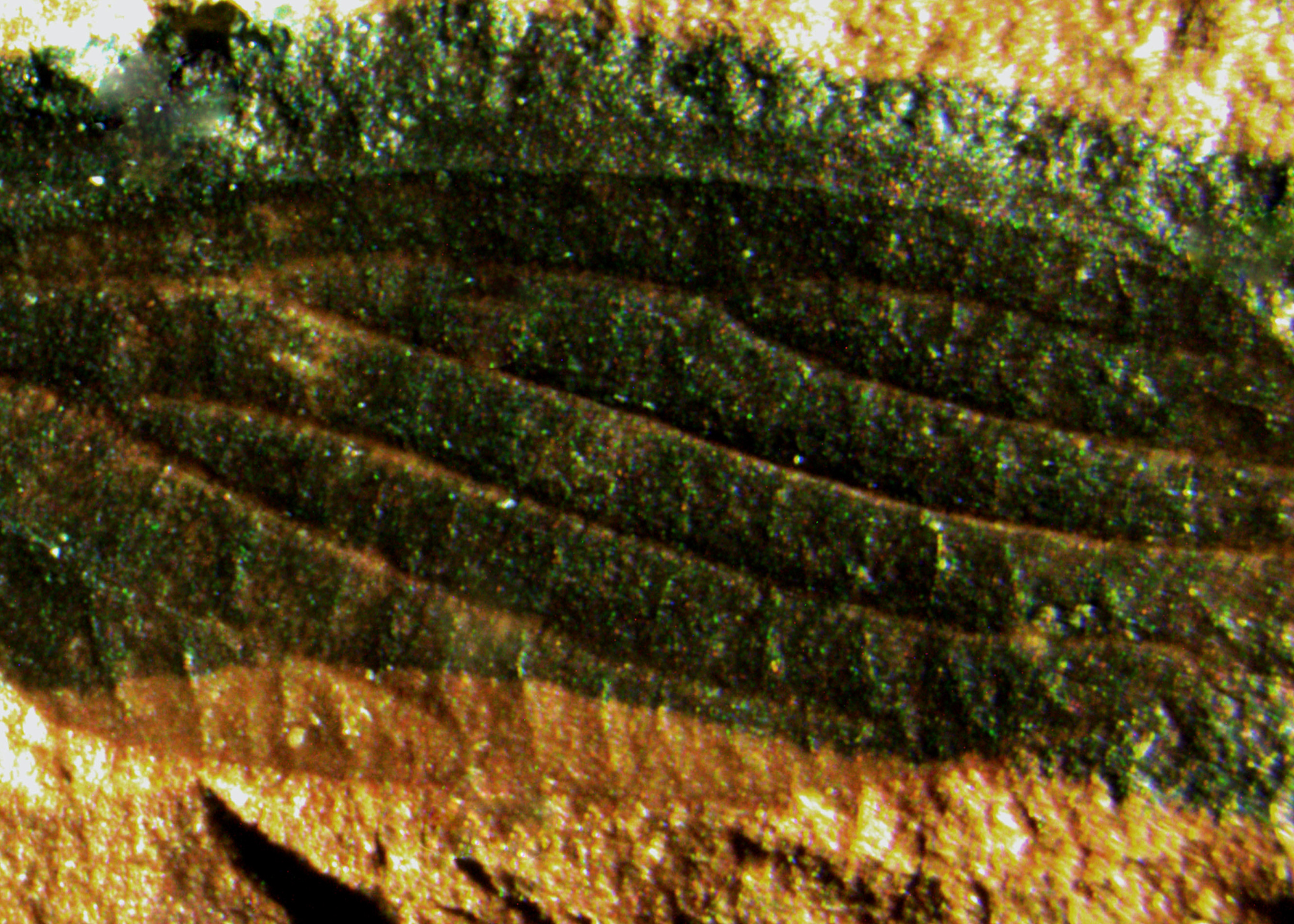Abstract
The Late Palaeozoic insect order Caloneurodea Handlirsch, 1907 is a rather small clade in the superorder Archaeorthoptera Béthoux & Nel, 2002 (Béthoux et al., 2003), several representatives have been recently described from Portugal, France, China, and Russia (see Dvořák et al., 2021 and references herein). The body structures of these insects are poorly known and the majority of genera and species are based on isolated wings. Also the majority of genera and species are Permian and latest Carboniferous. With two genera and species recorded from the Moscovian of the Pas-de-Calais Basin, this area is of great interest to estimate the diversity of this order during the early Pennsylvanian (Pruvost, 1919; Prokop et al., 2014). Here we describe the second genus and species from the Avion locality, which has already given Aviogramma gracilis Prokop et al., 2014. This discovery further confirms the very important richness and diversity of the fossil entomofauna of the slag heap of Avion (Nel et al., 2013).
References
- Beckemeyer, R.J. (2009) Ligogramma wichita, a new species of Caloneurodea (Polyneoptera: Orthopterida) from the Lower Permian Wellington Formation of Noble County, Oklahoma. Journal of the Kansas Entomological Society, 82, 300–304. https://doi.org/10.2317/JKES809.30.1
- Béthoux, O. & Nel, A. (2002) Venation pattern and revision of Orthoptera sensu nov. and sister groups. Phylogeny of Palaeozoic and Mesozoic Orthoptera sensu nov. Zootaxa, 96 (1), 1–88. https://doi.org/10.11646/zootaxa.96.1.1
- Béthoux, O., Nel, A. & Lapeyrie, J. (2003) The extinct order Caloneurodea (Insecta: Pterygota: Panorthoptera): wing venation, systematics and phylogenetic relationships. Annales Zoologici, 54, 287–300.
- Brauckmann, C. & Herd, K.J. (2005) Insekten-Funde aus dem Westfalium D (Ober-Karbon) des Piesberges bei Osnabruck (Deutschland). Teil 2: Neoptera. Osnabrücker Naturwissenschaftliche Mitteilungen, 30/31, 19–65.
- Carpenter, F.M. (1943) The Lower Permian insects of Kansas. Part 9. The orders Neuroptera, Raphidiodea, Caloneurodea and Protorthoptera (Prosbnisidae), with additional Protodonata and Megasecoptera. Proceedings of the American Academy of Arts and Sciences, 75, 55–84. https://doi.org/10.2307/20023450
- Carpenter, F.M. (1970) Fossil insects from New Mexico. Psyche, 77, 400–412. https://doi.org/10.1155/1970/84847
- Dvořák, T., Pecharová, M., Leipner, A., Nel, A. & Prokop, J. (2021) New archaeorthopteran insects from the Pennsylvanian of Piesberg reveal unexpected mosaic of morphological traits and colouration pattern of the tegmina. Historical Biology. https://doi.org/10.1080/08912963.2020.1867127
- Garrouste, R., Lapeyrie, J., Steyer, J.-S., Giner, S. & Nel, A. (2018) Insects in the Red Middle Permian of Southern France: first Protanisoptera (Odonatoptera) and new Caloneurodea (Panorthoptera), with biostratigraphical implications. Historical Biology, 30, 546–553. https://doi.org/10.1080/08912963.2017.1301448
- Handlirsch, A. (1907) Die fossilen Insekten und die Phylogenie der rezenten Formen. Ein Handbuch für Paläontologen und Zoologen. 1430 pp. (Wilhelm Engelman Verlag, Leipzig), 641–1120.
- Huang, D.Y., Fu, Y.Z., Lian, X.N. & Nel, A. (2020) Sinaspidoneura magnifica nov. gen., nov. sp., first Chinese Caloneurodea (Insecta: Archaeorthoptera). Geobios, 63, 33–37. https://doi.org/10.1016/j.geobios.2020.10.003
- Loureiro, J.P., Correia, P., Nel, A. & Pinto de Jesus, A. (2010) Lusitaneura covensis n. gen., n. sp., first Caloneurodea from the Carboniferous of Portugal (Insecta: Pterygota: Panorthoptera). Annales de la Société Entomologique de France, (N.S.), 46, 242–246. https://doi.org/10.1080/00379271.2010.10697664
- Nel, A., Roques, P., Nel, P., Prokin, A.A., Bourgoin, T., Prokop, J., Szwedo, J., Azar, D., Desutter-Grandcolas, L., Wappler, T., Garrouste, R., Coty, D., Huang, D.Y., Engel, M. & Kirejtshuk, A.G. (2013) The earliest known holometabolous insects. Nature, 503, 257–261. https://doi.org/10.1038/nature12629
- Prokop, J., Roques, P. & Nel, A. (2014) New non-holometabolous insects from Pennsylvanian of Avion locality in Pas-de-Calais, France (Insecta: ‘Exopterygota’). Alcheringa, 38, 155–169. https://doi.org/10.1080/03115518.2014.848620
- Pruvost, P. (1919) Introduction à l’étude du terrain houiller du Nord et du Pas-de-Calais. La faune continentale du terrain houiller du Nord de la France. Mémoires pour servir à l’Explication de la Carte Géologique de la France, Paris, 584 pp.
- Rasnitsyn, A.P. & Aristov, D.S. (2013) New fossil insects (Insecta: Caloneurida, Hypoperlida, Palaeomanteida, Jurinida) from the Middle and Upper Permian of European Russia. Paleontological Journal, 47, 678–704.
- Tillyard, R.J. (1937) Kansas Permian insects. 17. The order Megasecoptera and additions to the Palaeodictyoptera, Odonata, Protoperlaria, Copeognatha and Neuroptera. American Journal of Science, (5), 33, 81–110. https://doi.org/10.2475/ajs.s5-33.194.81


